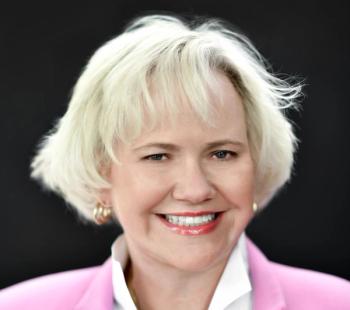
EHRs were just the start: The future is SMART on FHIR apps that can inspire innovation and transform healthcare | Viewpoint
Innovation around healthcare apps could help clinicians and enable organizations to streamline billing and collections.
The roots of electronic health records (EHRs) go back to the 1960s. But it wasn’t until 2009, when the “Meaningful Use” program came into effect, that healthcare organizations began aggressively
Created by the HITECH Act and run by the Centers for Medicare and Medicaid Services (CMS),
These incentives spurred tremendous growth in the number of EHRs available on the market. Over the next few years, however, consolidation drastically reduced the number of EHRs. Today, there are over
A common complaint among customers of prominent EHR vendors involves usability issues and lack of features. Unfortunately, the long innovation cycle of major EHR vendors means customers may have to wait years before solutions show up on the platform.
Further, while standards like HL7’s Fast Healthcare Interoperability Resources (FHIR) enable interoperability, FHIR isn’t implemented consistently by all EHR vendors. As a result, out-of-the-box connectivity for apps may be limited.
A new view of EHRs
Fortunately, the rise of SMART on FHIR is changing how healthcare organizations view EHR platforms.
The emergence of SMART on FHIR means healthcare organizations can now utilize EHRs as platforms on which specialized apps can be built to run to furnish the unique functionality they desire that run on the data contained in the EHR, which might be augmented with the patient-recorded data or the data patient acquired from other providers. This is similar to the revolution involving mobile phones, which prior to the iPhone, were good for little more than talking and texting. The advent of Apple’s App Store changed all that, redefining mobile phones. Today, smartphones are platforms on which a seemingly limitless number of mobile apps can run, providing fertile ground for innovation.
For a healthcare apps developer, SMART on FHIR presents tremendous opportunities. Using SMART on FHIR, a developer can build a healthcare app on Epic, Cerner, and dozens of other EHRs. This also vastly reduces development time. It spurs innovation because the developer knows an app can be deployed across multiple EHR platforms.
AI and the apps advantage
Artificial intelligence (AI) has the ability to transform healthcare. However, it is challenging for most EHRs to keep up with the rapid pace of developments in AI. That is not the case with apps, which can integrate AI capabilities far more rapidly than EHR platforms.
Accelerating innovation cycles gets valuable tools into the hands of providers much faster. It can also bring greater job satisfaction to clinicians and other healthcare employees who are burned out from alert, screen, and click fatigue due to EHR limitations and lack of functionality.
The focused functionality that healthcare apps offer provides excellent opportunities for customization and personalization. An EHR catering to multiple health systems could never enable the focused functionality and organization-specific features that an app running on top of an EHR could provide. With SMART on FHIR, healthcare organizations can prioritize features around which developers can build apps. This wasn’t possible years ago.
Innovation around healthcare apps isn’t restricted to the clinical realm. Developers are creating powerful apps today that allow healthcare organizations to streamline billing and collections. Given most provider organizations' tight margins, apps that bolster the revenue cycle can help improve their financial stability.
While the surge in AI innovation should lead to better patient outcomes and greater efficiency, integration challenges can hinder the effective implementation of AI-powered apps within Electronic Health Records (EHRs) systems. Thus, there is a growing need among healthcare organizations for a streamlined process to vet and seamlessly incorporate AI into EHRs.
Apps are the Future
Though academic hospitals and health systems have embraced SMART on FHIR apps for a while, the larger healthcare market is now becoming more aware of how apps can make their jobs easier and more efficient and ultimately help provide better care. In the future AI-powered apps will be an essential innovation tool to unlock new insights and transformative capabilities for providers and their patients.
Pawan Jindal, MD, is CEO of Darena Solutions.






















































































